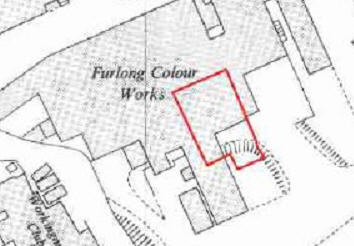 Southwest
Environmental Limited
Southwest
Environmental Limited Southwest
Environmental Limited
Southwest
Environmental Limited| London |
| 02076 920 670 |
| Exeter |
| 01392 927 961 |
| Manchester |
| 01612 970 026 |
| Bristol |
| 01173 270 092 |
Southwest Environmental can prepare your Site Condition Report for you. If you are on a site which is historically low risk, it may be possible to forgoe soil sampling and assess soil quality using a cost effective desk based approach. SWEL have submitted several site condition reports using this method. Read about a Site Condition Report Case Study.
A Site Condition Report is a supporting document for an Environmental Permit, that details the following:
The condition of the site when you arrive. (Pre-application)
Incidents that may degrade the quality of the land during the life of the permit, and practices put in to operation that may help maintain the quality of land. (Operational)
Quality of the land on close of operations at the site. (Surrender)
Of
particular concern is that of Contaminated Land, it is important to
ascertain before operation commences that the land is not contaminated
from previous industries occupying the site.
This can be accomplished via a
Desktop Study which will define whether the land is is likely to be
contaminated. If conclusive evidence can not be found from secondary
data, then Soil Sampling can be
used to give a quantitative description of soil quality.
When is Soil sampling
necessary?
It is vital to check whether your site is contaminated before you start
or you could be left footing a large clean up bill (remediation)
when you come to surrender your permit. Site Condition Reports are
sometimes needed for major permit
variations.
The UK already has plenty of contaminated land, and the Environment Agency are keen to minimize further impact on land quality from permitted activities via the use of site condition reports. Below we see the present day layout of the site (similar to the 1994 map), and what the site was being used for 30 odd years ago (1976 map).


It is apparent that the site being proposed for used as a waste facility may well have significantly lower land quality impacts owing to the presence of a "colour works" on the present site, and land quality may already be lowered prior to the permit being granted. However, it is important to prove the ground is already of poor qaulity with testing, otherwise you may get the blame for someone else's mess!
Historic factors such as these must be considered when assembling a site condition report.
1. If you sampled the soil or groundwater at the time you
applied for the original permit site condition report.
Or
2. If your risk assessment identified that your activity presented a risk to
land or groundwater and one or more of the following applies:
(a) If your records of the pollution prevention measures employed and their effectiveness at the site are incomplete. For example, if it is feasible that an undetected failure of your pollution prevention measures could have taken place (e.g. low level leakages over a substantial period of time) leading to land or groundwater pollution.
(b) If your records of the occurrence and remediation of pollution incidents are incomplete.
(c) If the records show compliance issues with respect to matters that may affect the condition of the land such as spills and leaks of polluting substances.
The EA state that:
"We do not expect you to address historic contamination, or that caused by non-permitted activities, except where the site has an assumed zero contamination because you did not establish otherwise before you commences operations. However, if we believe that it is reasonable to attribute contamination to your permitted operations then we will require you to take all practical steps to remediate that contamination."
There may well be a dramatic drop in the value of your site if it is found to be contaminated. Remediation costs are typically very high, and may even result in your site having a negative value.
If you intend to make a substantial change in your
operations, you should send the EA baseline data within an site condition report
as part of your application for a variation to your permit. We will not require
you to submit baseline data if you want to update your permit for reasons that
do not constitute a substantial change, for example if you want to add a minor
emission point to air.
The EA could decide to update your permit at any time and require you to provide
baseline data as part of that update. However, in practice, the main reason for
updating permits during the period 2012 to 2020 will be to give effect to BAT
conclusions published by the European Commission and that will trigger the
requirement for you to produce an SCR containing baseline data.